A bathroom and a bedroom is what’s left of Alexandra Camacho Quiñones’ home in the Amalia Marín sector of the Playa de Ponce neighborhood in Ponce. Her house was destroyed three years ago after Hurricane María, and as time passes, the despair of not having a new home for her and her family of three takes a toll.
She has been waiting for a year for the Department of Housing’s (DH) Repair, Rebuild and Relocate (R3) program to begin rebuilding her home.
“I keep calling every two weeks, with the same anxiety,” she said.
She recalls that she has been in contact with the R3 program regularly since last October.
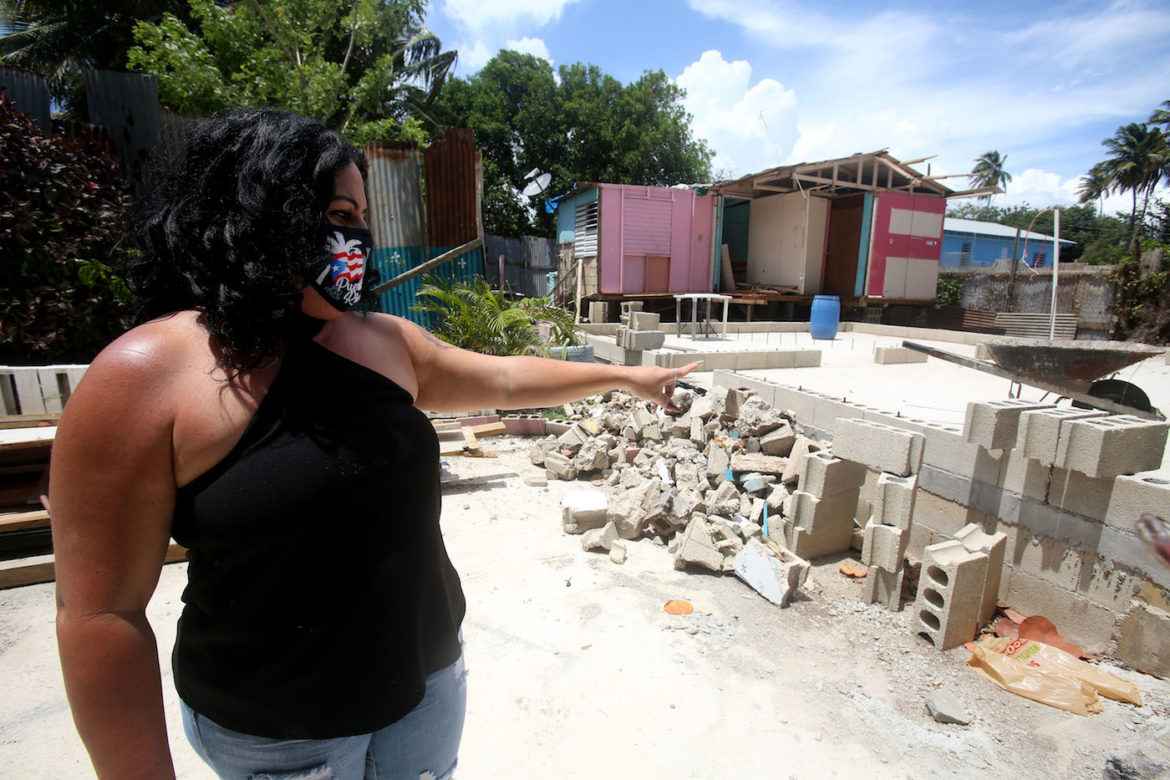
Photo by Gabriel López Albarrán | Center for Investigative Journalism
Alexandra Camacho Quiñones and Melvin Rodríguez have been waiting a year for R3’s support to rebuild their house on the Amalia Marín plots in the Playa de Ponce neighborhood.
“I called them in despair, telling them that I don’t have a blue tarp, that it ripped off and that I had no way to put it back up because I had no one at home to climb up there, because they can fall, because the roof was split in half and the wood joints were all broken. The hurricane broke all the joints that hold the roof, and they told me: ‘Yes, we’re going to provide you with another tarp,’ but they never came’,” she said.
Camacho Quiñones is tired of the inaccurate and changing information that she is given every time she calls to find out about the status of her house. She says she has never received a formal notification with information about her case.
“They don’t do anything because they sleep well,” she said in frustration, referring to government employees.
A month ago, they told her that the results of the lead test required by the R3 program were ready, and that all that was pending was a visit from a carpenter to give the “final go-ahead.”
A week ago, they told her again that everything was approved and ready, including an environmental test that is required by the program. That same day, she decided to call again, but to a different phone number, and to her surprise, she was told she was lacking the appraiser’s visit and the environmental test.
Camacho Quiñones warned them that when the carpenter comes to visit, he will not see what they had seen in the initial inspections, since, tired of waiting, her husband Melvin Hernández has demolished the house little by little.
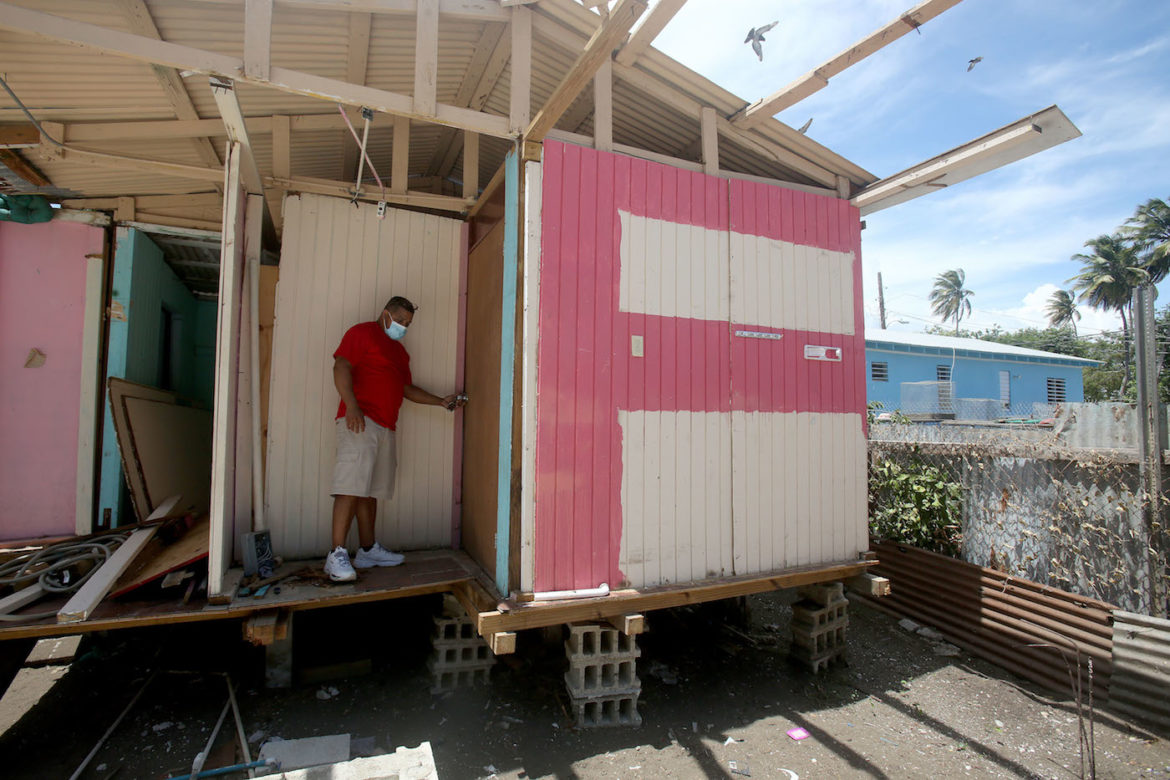
Photo by Gabriel López Albarrán | Center for Investigative Journalism
Camacho Quiñones and Rodríguez call the R3 offices every two weeks to follow up on their case.
Hernández even began to make a subfloor to build a new house himself on the land with money donated and materials that they received after sharing their situation on social networks.
However, that money is not enough.
“Right now, we laid down the floor, but work is at a standstill, because without money, without help, we can’t do more,” she lamented.
“Eventually, I’ll have to start [building] the house myself any way I can, with four walls, any way. The floor is already there. We were thinking of laying down the floor, using the wood that is salvageable and making a big room, so all of us could go in there. But, what happened? When we knocked it down, the wood was rotted. Nothing could be saved,” she added.
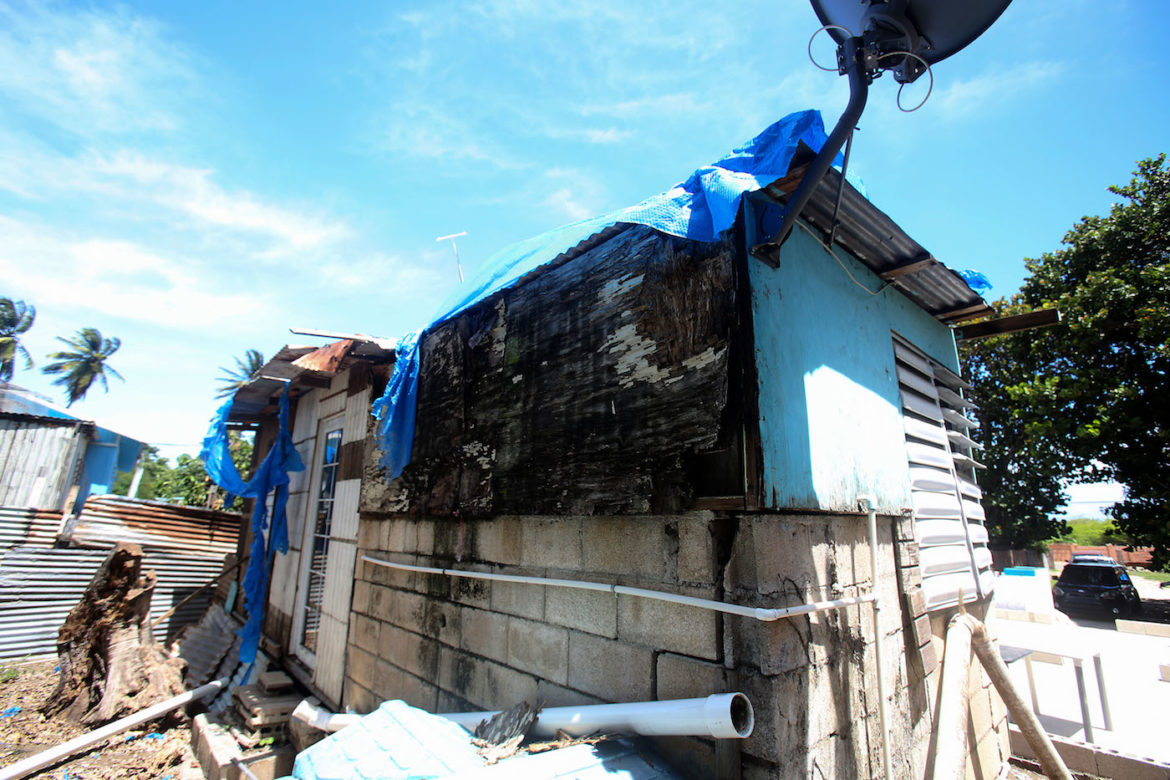
Photo by Gabriel López Albarrán | Center for Investigative Journalism
The family lived in the house until they had to move because of the January earthquakes.
The kitchen was recently demolished to clear the area and leave no debris that could pose a risk during Storm Isaías.
Despite the conditions in which Hurricane María left the house and the deterioration of the blue tarp, the family lived in the destroyed house until last January, when they were forced to move due to the earthquakes that mostly affected the island’s southern region where they live.
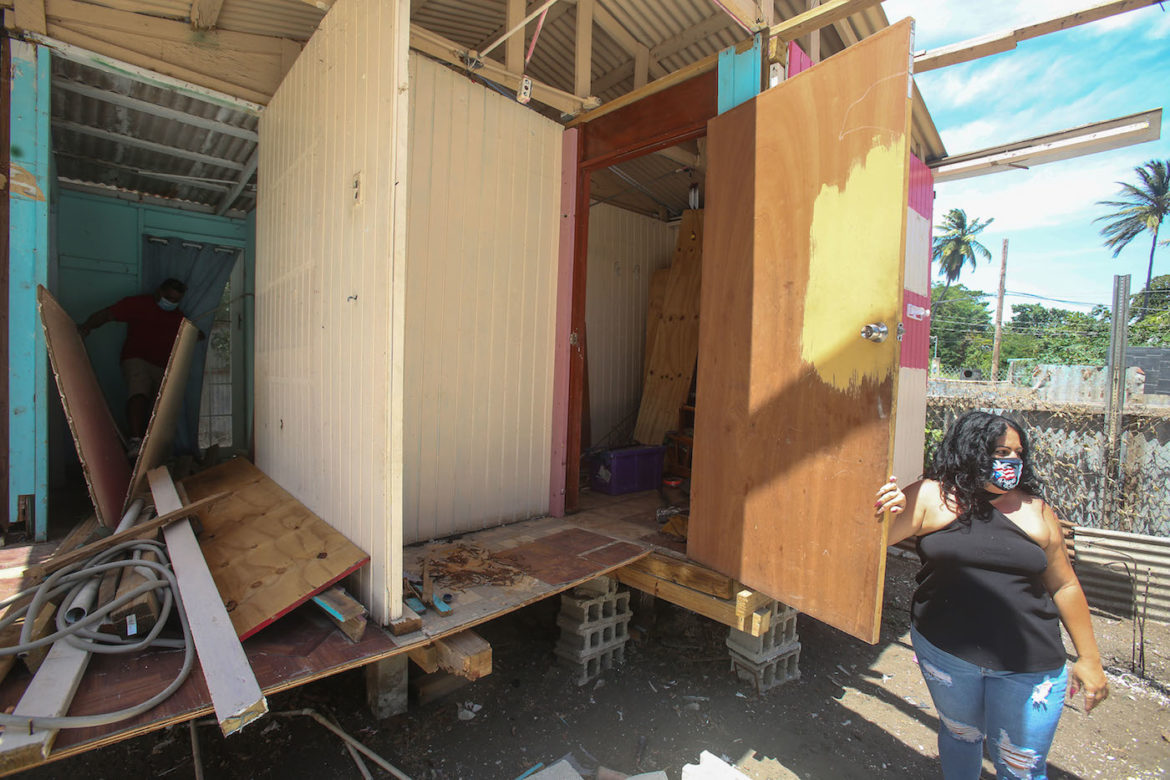
Photo by Gabriel López Albarrán | Center for Investigative Journalism
One year after starting the negotiations with R3, Camacho Quiñones has not received an official notification of the status of her case.
The Federal Emergency Management Agency (FEMA) paid Alexandra and her family three months’ rent after the earthquakes. After those three months were up, further aid was denied, and she had to appeal. They were recently notified that their rent payment refund was approved through July. Now, she will have to work on getting an extension of the aid for the coming months. While the case is being evaluated, she has to continue paying the rent again with her own money.
When she contacted FEMA, they stressed that the aid is temporary, and she must look for alternatives on her own.
The family has not applied for the Section 8 subsidized housing program because, after consulting with the Department of Housing, the agency recommended that they refrain from doing so because they could lose the R3 program aid, which “was already in an advanced stage.”
Camacho Quiñones would have preferred to be relocated instead of having her house rebuilt, since the area where it is located is in a flood prone zone. She does not understand how a reconstruction proposal was approved in that area, when the agency has insisted that it will not rebuild in a flood prone zone.
“Everyone knows that Playa de Ponce is a flood prone zone, with losses every time there’s bad weather. But when they told me I was ‘approved for reconstruction,’ I said: ‘well, it’s their call’,” she said.
Her mother and sister, who were her neighbors, also applied for the R3 program a year ago, but have not had a visit from the inspectors, which would be the first step for them to assess the damage. They both currently live with Alexandra in the rented house, since the house where the mother and sister lived is uninhabitable.
The Camacho family’s emotional health has been affected by the loss of their homes.
“My mother has always been prone to depression, but after the hurricane she has deteriorated,” Alexandra said.
According to information the Center for Investigative Journalism (CPI, in Spanish) got from the Department of Housing, Alexandra’s case was referred to the Deed Approval Program, despite the fact that she claims to have the deed to her property.
In her mother, Esmeralda Quiñones’ case, the agency is still determining her eligibility for the program.
Housing Secretary Luis Fernández Trichet told the CPI that he does not recall that the municipality of Ponce requested information about Alexandra Camacho Quiñones’ case. As he explained, in cases like this, the municipalities are usually the ones that contact the Department to ask about their status.
“There are two people who are assigned to deal with the municipalities and they usually take care of the cases immediately and people are notified about the status,” he said.
He also said that if the case is far along or close to going into reconstruction, “it does not make sense to request Section 8.”
“We have to validate if her case justifies moving her, because if she should be moved, once the house repair begins, the program pays her for the move if she has nowhere to go,” he said.
Fernández Trinchet stood by the R3 program, assuring that there are more than 600 houses that are under repair or reconstruction. “Forty-four homes have been completed as part of the program and we’re moving ahead with what we had said of having 300 more homes in repair or reconstruction a month,” he added.
He said they have only received a few cases like Alexandra’s, who are able to access the Section 8 or Section 9 (public housing) programs while the R3 works begin.
“I’m not seeing an avalanche of cases calling daily,” he said.
According to data from the DH as of Aug. 11, 26,995 people applied to the R3 program, of which 6,052 have been eligible to date. Of those, 266 are in the pre-construction process, 316 under construction, and 45 have been completed for a total of 627 cases to which money was assigned.
The Housing Secretary said 2,641 of the total applications for the R3 program are for houses that are still covered with blue tarps. He explained that they will give priority to applications from people with substantial damage where there are blue tarps, the elderly, and people with disabilities.
After criticizing the slow pace of the program, Governor Wanda Vázquez Garced said in her State of the Commonwealth and Budget address on July 18, that “excuses were unnecessary and unacceptable,” referring to how the prior Housing Secretary Fernando Gil Enseñat had handled the program, saying she had ordered the new Housing Secretary to “quickly start the construction and reconstruction of homes affected by Hurricanes Irma and María,” three years ago.
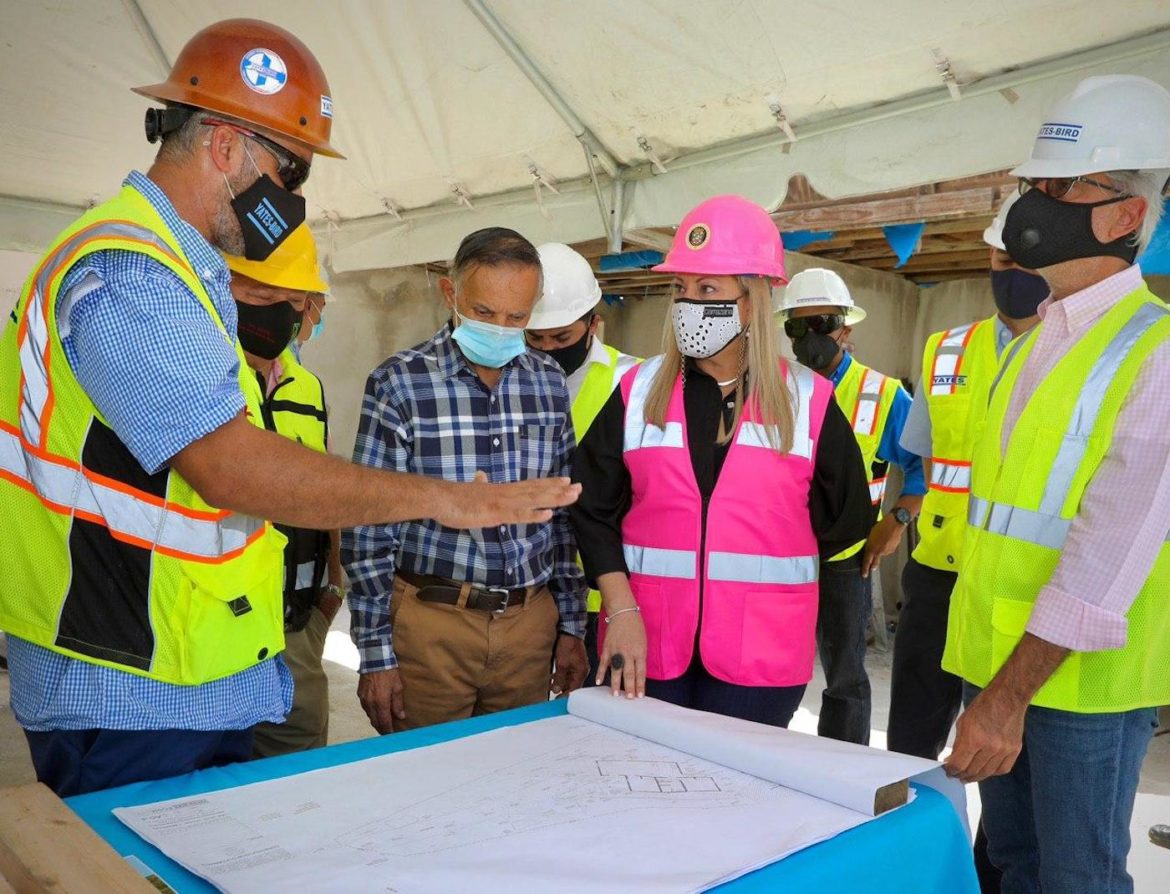
Photo La Fortaleza
On July 2, the Governor visited a home under reconstruction by the R3 Program in Juncos.
“These projects will finally begin and today I announce that … we will be starting to work on 300 to 400 housing units per month throughout Puerto Rico, until we fulfill our mission,” the Governor added.
However, the Housing Secretary explained what the Governor said: “We’re not saying that there are going to be 300 to 400 houses finished each month. There’s no way that can happen because each home is a different universe. There are houses that may be ready in three weeks…. But there are houses that will take three or four months to finish due to the type of house.”
According to the Legal Aid organization, the amendments to the R3 Program Guide penalize applicants who invested their money in repairs during the time they have been waiting for assistance.
A recent amendment to the Guide states that “the program will not finish informal construction that has been started, but the house would still qualify for reconstruction or relocation.” This means that the program will not reimburse the investment made by the applicants, Legal Aid Attorneys Ariadna Godreau and Paula Fournier explained.
Godreau insisted that given the slowness of the program and the lack of information on how their cases are moving along, people, in frustration, are looking for options.
The Secretary confirmed to the CPI that program participants who invest in fixing their houses risk having the invested amount deducted and the repairs disqualified from Building Code requirements.
“That’s going to be a waste of money and time,” he warned.
In addition, he recommended that “they look for housing options with the agency and with the municipalities before starting to invest.”
On the other hand, Fournier said that for a fair recovery to occur, it is important to take into consideration the wishes of individuals and communities.
Both attorneys recommended that people who are unsatisfied with the R3’s determination should request a reevaluation.
The CPI learned of at least two cases where the applicants were not satisfied with the program’s decision to rebuild the homes, as they were only interested in repairs.
The Legal Aid team criticized the lack of a transitional housing plan for those who are still waiting for R3, as is the case of Camacho Quiñones and of married couple Reinaldo Gómez and Silvia Soto, who have had to use their money to pay rent for a home.
In July, Gómez and Soto received a visit from the Governor and the Secretary of Housing, who went, with the press, to the Ceiba Sur neighborhood of Juncos to inspect the reconstruction work of their home through R3.
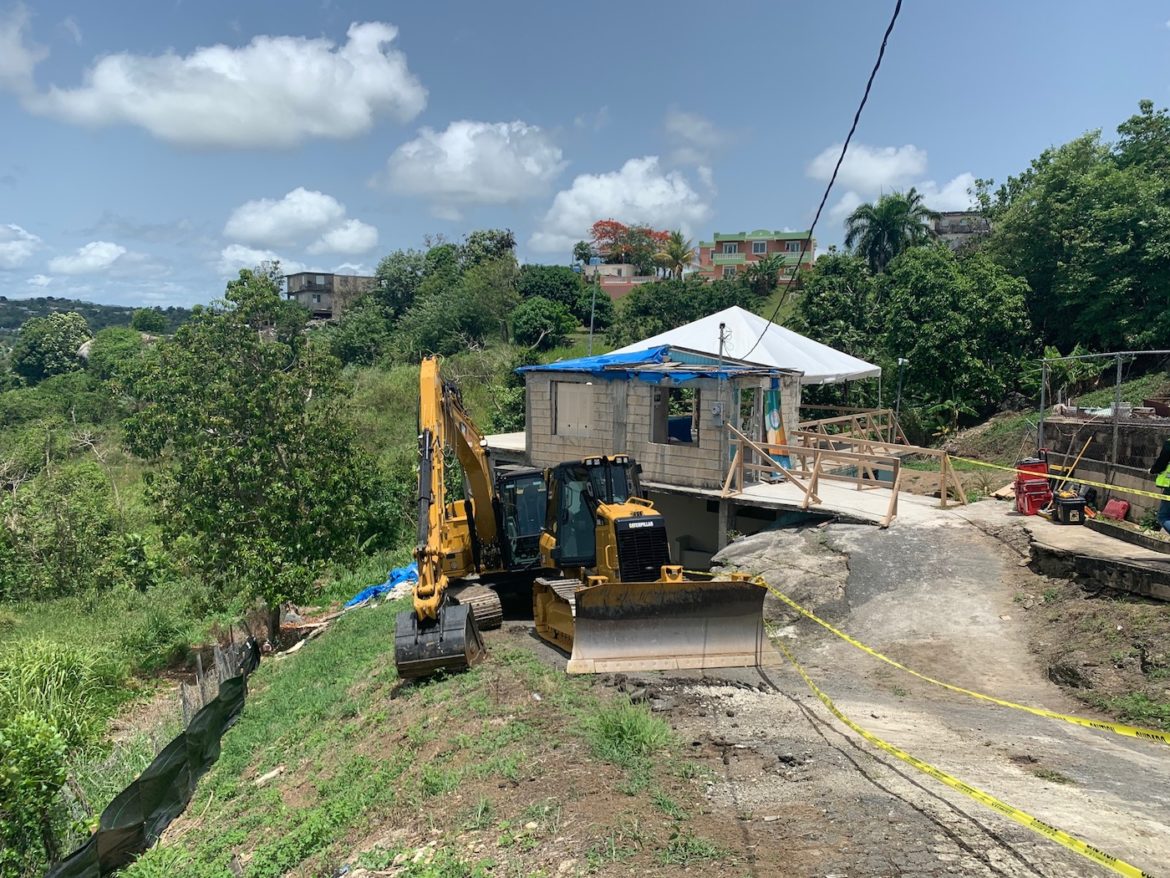
Photo by Jeniffer Wiscovitch | Center for Investigative Journalism
Gómez and Soto disagreed with the R3 decision to rebuild their home in the Ceiba Sur neighborhood in Juncos. The couple preferred to have the damages repaired.
Speaking with the CPI, they stressed that after Hurricane María left them homeless, they did not get any assistance, either from the government of Puerto Rico or from the municipality of Juncos, to pay the rent for the house they had to move to. Gómez said he paid for it with his Social Security check. It wasn’t until the church they attended helped them build a structure on their land that they were able to move back again and stop paying rent.
On the same day of the Governor’s visit, the couple was relocated to a house where they do not pay rent, until construction is finished.
Fernández Trinchet told the CPI that the program does not allow the person to choose what type of help they need because it is up to an engineer or an architect to establish the type of repair the home needs after evaluating it.
“The concept of the program is long-term housing, it’s not about: “just fix my windows and that’s it,” he said.
He said the DH has to comply with what federal regulations require of the program.
“Unfortunately, either we fix the house for you, which can be simple or more complex, but we can’t choose between ‘install the cabinet for me, don’t fix the bathroom.’ That kind of thing does not exist in this program,” he said.
Regarding moving R3 applicants into transitional housing, he explained people can only be moved when the type of repair the house needs is determined. However, in Alexandra Camacho Quiñones’ case — in which the necessary repairs have been established — the agency has not yet offered her the alternative of moving.
In response to claims from some communities, Fernández Trinchet confirmed that the agency will be evaluating how to make homes or communities safer to avoid having to relocate.
R3 program Guides establish that homes that sustained significant damage and that are located in flood-prone areas are only eligible for relocation.
He added that housing mitigation will only be possible in cases where it is cost effective for the R3 program, as was established under former secretary Gil Enseñat’s tenure.
“If, after analyzing the mitigation issue in a community, it turns out that $150,000 will be enough to repair each unit, that’s something that can be done. But the concept of mitigation at the community level already entails a much broader and much deeper analysis, and what we don’t want is to make people wait in programs that don’t need mitigation,” he explained.
He said that people who opt for mitigation at the community level will be keeping their turn in the R3 program. “[Their wait could be shortened] with mitigation program funds and it will obviously depend on how much it costs to mitigate a community per unit,” he added.
Godreau said that relocation will only be available to applicants who have a property title to their home when they apply, or to those who automatically enter the DH’s Deed Approval Program, which provides assistance for participants to get the property title. But she explained that participating in this program does not guarantee that the applicant will be given the deed, so the person could lose the R3 program’s assistance.
“The person is left in a limbo that can be extended up to 360 days, then go back to the R3 program and get a decision [from Housing],” the attorney warned.
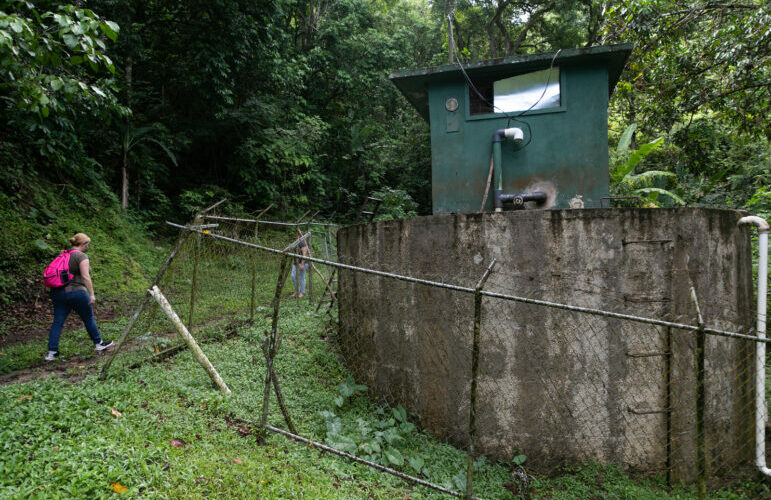
8 septiembre, 2022 LEER MAS